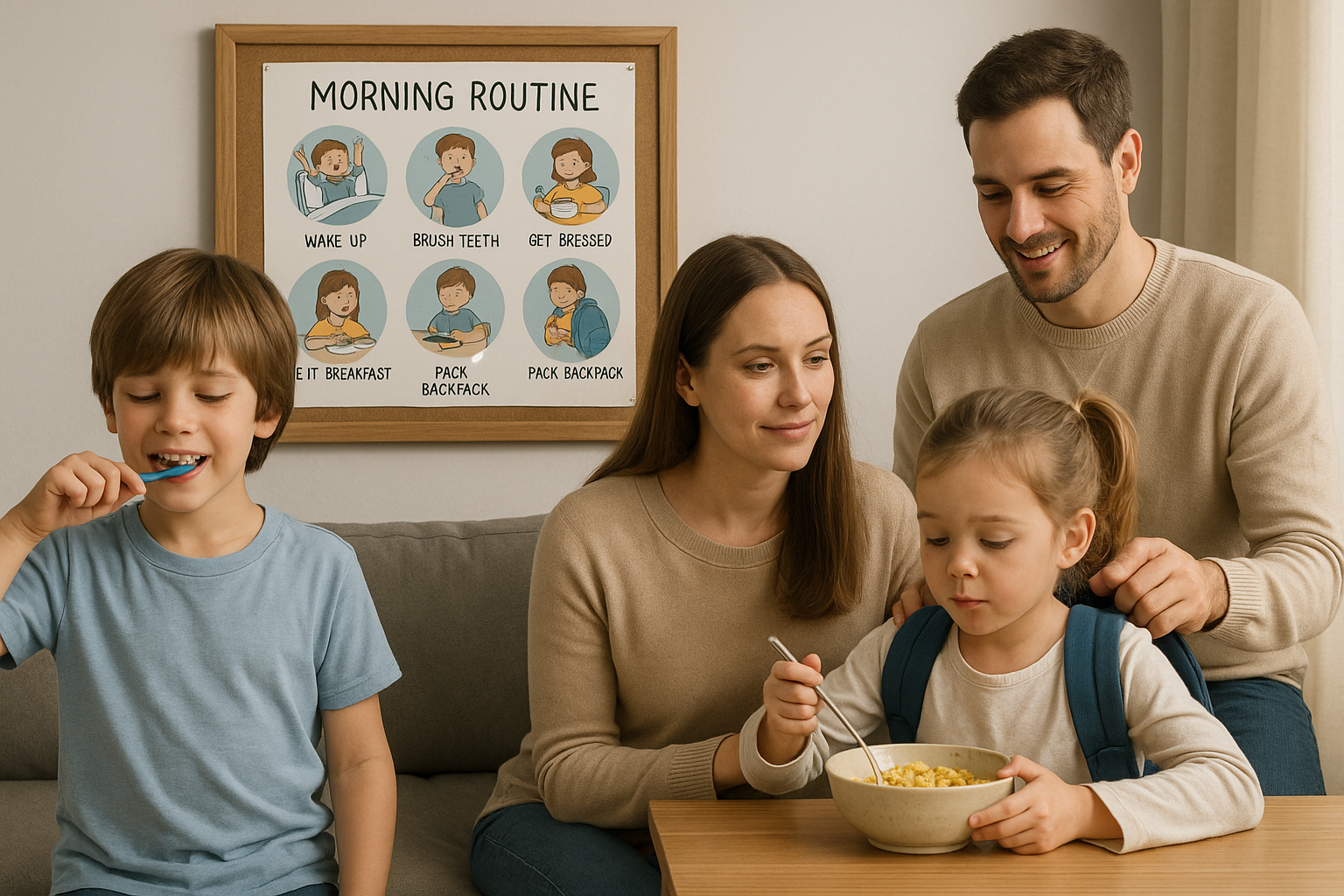Creating a healthy routine for children isn’t about enforcing rigid schedules—it’s about building a predictable, comforting structure that supports their emotional, social, and cognitive growth. Routines help children feel safe and in control of their environment, and they also help parents stay organized and reduce daily stress.
In this article, we’ll explore practical strategies to build routines that work for both kids and caregivers, with a focus on flexibility, simplicity, and consistency.
Why Routines Matter in a Child’s Life
Children thrive on predictability. When they know what to expect, they feel more secure and are better able to regulate their emotions. This stability helps in many aspects of development, including:
- Behavior management: Children are more cooperative when they know what comes next.
- Time management: Routines teach them how to manage time and transitions.
- Emotional well-being: Predictability reduces anxiety.
- Independence: Repeated activities build skills and confidence.
A healthy routine doesn’t mean doing things at the exact same time every day—it means doing things in a similar order or flow, which creates a dependable rhythm.
Start with the Basics: Daily Anchors
Every routine needs “anchors”—fixed points in the day that can help structure the rest of the activities. Here are four key anchors:
- Wake-up time
Try to wake your child around the same time each day. A consistent morning routine sets a positive tone for the entire day. - Meal times
Meals are a natural way to create structure. Even if exact times shift, the routine of breakfast, lunch, and dinner helps children understand the flow of the day. - Nap or quiet time
For younger children, naps are essential. Older children may benefit from quiet time where they can rest or play independently. - Bedtime
Perhaps the most important anchor, a consistent bedtime routine signals to the brain that it’s time to wind down. This leads to better sleep and easier mornings.
How to Create a Morning Routine That Works
The morning routine sets the tone for the entire day. Here’s a simple example:
- Wake up and cuddle for a few minutes (connection time)
- Brush teeth and wash face
- Get dressed
- Eat breakfast
- Pack school bag or prepare activities for the day
Tip: Use a visual chart for toddlers or preschoolers. Pictures of each step can help them become more independent.
After-School or Afternoon Routines
Whether your child is in school or at home, the after-school hours can be tricky. Children are often tired or overstimulated by this time. A good routine may include:
- A snack
- Free play or outdoor time
- Homework or reading time
- Help with small household tasks
- Family time or a relaxing activity before dinner
Establishing a Bedtime Routine
Sleep is essential for healthy development, and a good bedtime routine makes a huge difference. A typical bedtime routine might include:
- Bath or shower
- Pajamas and brushing teeth
- Reading a story
- A few minutes of quiet talk or cuddles
- Lights out at the same time each night
Tip: Keep the environment calm—lower the lights, turn off screens, and avoid stimulating activities at least one hour before bed.
Weekend Flexibility: Structure with Freedom
Routines don’t have to disappear on weekends. Try to keep the same basic flow (wake time, meals, bedtime) while leaving room for spontaneous activities. This balance helps children remain grounded while also enjoying freedom and fun.
Involving Your Child in the Routine
When children are part of the planning, they’re more likely to cooperate. Depending on their age, you can:
- Let them choose the order of tasks
- Create a routine chart together
- Use timers or fun music for transitions
- Celebrate when they complete their routine
Giving children a sense of ownership turns the routine into a partnership rather than a set of rules.
Dealing with Resistance
It’s normal for children to resist routines from time to time. When that happens:
- Stay calm and consistent
- Offer limited choices (“Do you want to brush your teeth before or after putting on pajamas?”)
- Use natural consequences (“We won’t have time for a story if we don’t start bedtime now.”)
Avoid turning the routine into a power struggle. Keep things light and supportive.
Routine Tips for Different Age Groups
Toddlers (1–3 years)
- Keep it visual and simple
- Use songs and rhymes to mark transitions
- Provide choices to foster independence
Preschoolers (3–5 years)
- Let them help build the routine
- Be consistent but flexible
- Use routine charts with pictures or stickers
School-age children (6–10 years)
- Give them more responsibility
- Allow them to help set goals
- Encourage them to manage parts of their own schedule
What to Avoid
- Over-scheduling: Leave space for play, rest, and spontaneity.
- Rigidity: Life happens—sometimes routines need to bend.
- Punishment-based motivation: Positive reinforcement works better than threats or consequences.
- Comparisons with other families: Focus on what works best for your home and your child’s personality.
Building Long-Term Habits
Healthy routines aren’t about control—they’re about creating a rhythm of life that helps children feel safe, supported, and empowered. Over time, these small daily rituals will form the foundation for habits that last into adulthood.
Start small. Build one routine at a time. Celebrate small wins. And remember—consistency is more important than perfection.
